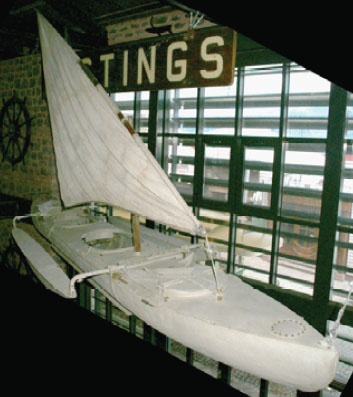Hi all, I stumbled on this on a turkish museum web page.
Can’t find any other mention of this craft. I e-mailed Grumman to see if they had any confirmation, but none so far… I also e-mailed the museum to see if there was a manufactures plate with date, etc. but nope.
"This rare and important craft was made in about 1941 by the Grumman Aircraft Corporation of America. (not so sure about that, since I can’t find anyone who has a record of it)
*** EDIT *** Grumman Corporation has nothing to do with this craft -
It is made of aluminium, and breaks down into three sections. The bow and stern compartments are watertight, with a locking hatch so they can store weapons and/or explosives. The centre section has two openings for the crewmen to sit in and the boat would either be paddled (outriggers retracted) or sailed (outriggers extended). The rudder was foot-operated via cables within the hull. These boats were used in WWII by special forces such as the Royal Marine Commandos, and Special Boat Section: they would be launched from submarines some distance from the target, and then, after the raiding party had returned to rendezvous with the submarine at sea, they would be scuttled."












